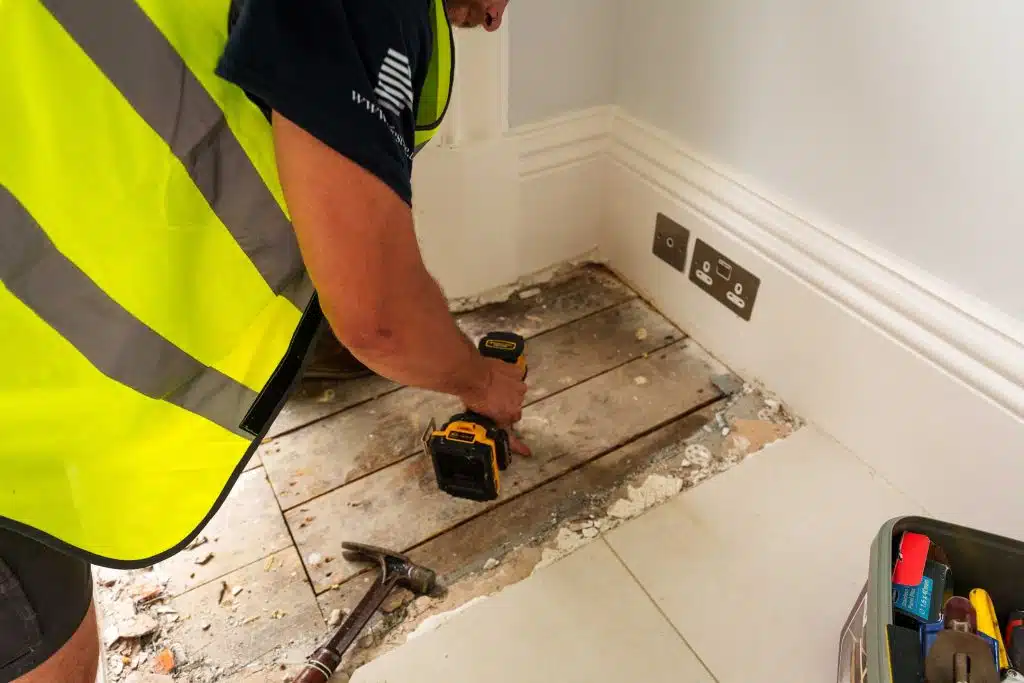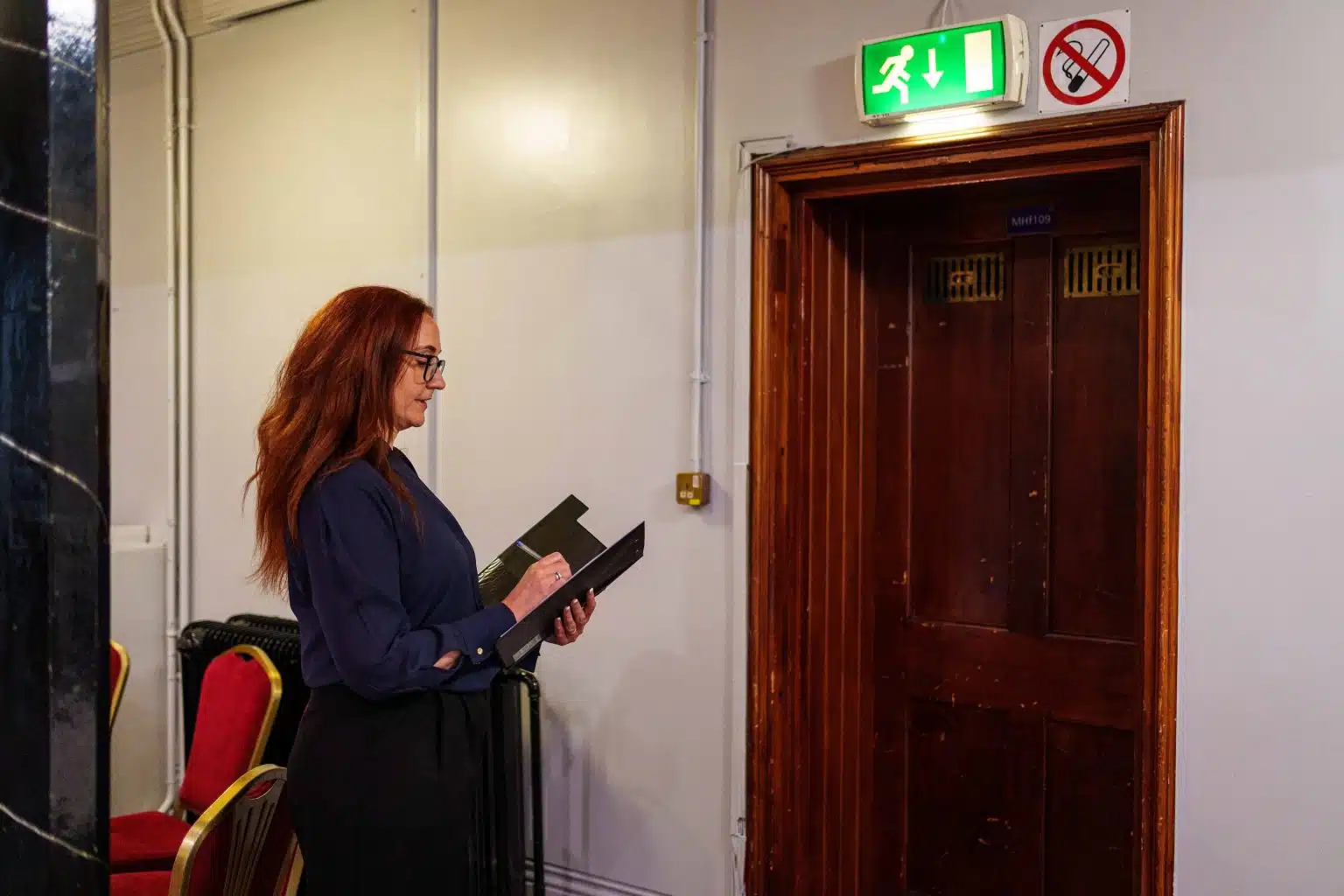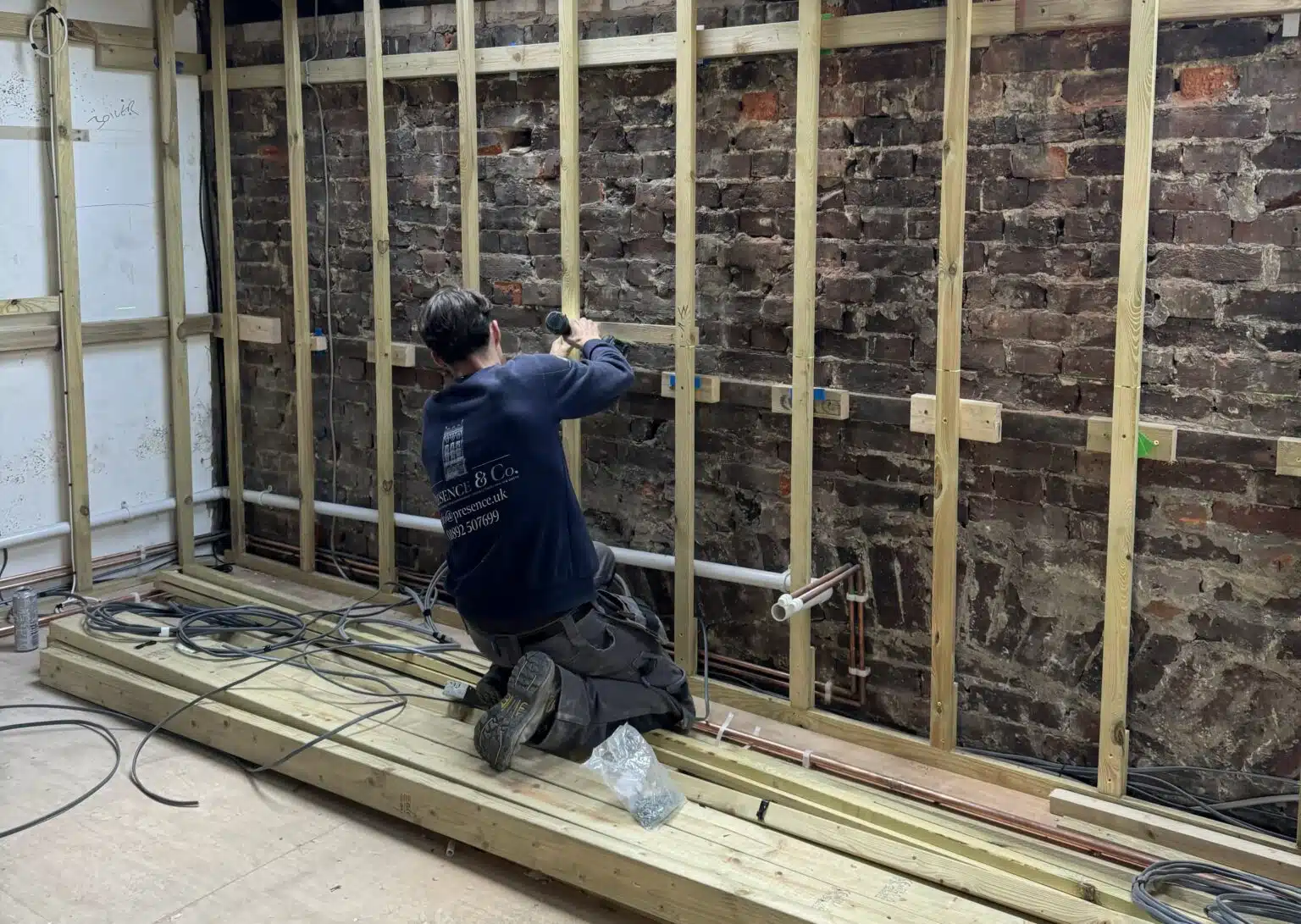Looking after a building here is never straightforward. The weather turns without warning, older stock groans under pressure, and compliance rules change as fast as you can implement them. By the time one job is ticked off, another’s waiting.
And most of these problems start quietly. A drip under a sink. A hairline crack in brickwork. A light that flickers now and then. Leave them, and they grow.

Damp and Mould — A Persistent Issue
The UK climate doesn’t need much help to cause damp. Months of rain, a cracked tile on the roof, or blocked gutters are often all it takes. Poor airflow in kitchens and bathrooms just speeds it along.
Once mould sets in, it rarely stays put — it works its way into plaster, paint, and sometimes deeper.
The only way to keep ahead of it is to keep looking for the signs, keep air moving, and fix problems while they’re still small. For large residential developments, our facilities management services help ensure this stays under control.
Heating and HVAC Failures
Heating systems are easy to forget about until they stop working — usually at the worst possible time. In older buildings, some are decades old, inefficient, and well past their best.
Annual servicing can keep them running, but efficiency is often a question of age. Boilers and systems over 10–15 years old usually cost more to keep alive than to replace. Smart controls can help manage costs across multiple properties.
Plumbing — Small Leaks, Big Problems

Plumbing problems don’t usually announce themselves. A drip hidden at the back of a cupboard, a slow drain, a tap crusted with limescale. Left alone, these are the things that turn into burst pipes or kitchen floods.
Older pipework, especially in hard water areas, needs close attention. Small repairs, winter insulation, and early fixes prevent the kind of emergencies that rack up costs quickly. Our general plumbing services keep both residential and commercial systems in top condition.
Electrical Faults
Electrical faults show up in small ways at first — lights that flicker, breakers that keep tripping. In commercial spaces, they can halt operations. In homes, they’re a safety risk that only grows with time. Regular electrical safety checks help prevent serious issues.
Exterior Wear and Tear
A crack in brickwork or paint that’s starting to peel often looks like surface wear. More often than not, it means water’s getting in.
Regular checks, dealing with repairs promptly, and keeping drainage clear are cheaper than finding out the damage runs deeper.
Security and Access Control
Security systems age quickly. Locks wear, codes get shared, and old cameras can be bypassed easily.
Annual checks, updates to entry systems, and working CCTV are a simple way to prevent far bigger problems down the line.
Compliance and Fire Safety
Fire safety can slip in everyday operation. Doors propped open. Alarms left untested. Emergency lighting overdue for inspection.
These things rarely feel urgent — until the day they are. Keeping escape routes clear and staying on top of regular checks is as much about safety as it is compliance.
Pest Control

Rodents, pigeons, insects — they don’t need much of an opportunity. A gap in the brickwork or poorly managed waste is usually enough. Unchecked, they cause damage to both property and reputation.
Routine inspections, sealing entry points, and managing refuse areas prevent infestations before they start.
Why Proactive Maintenance Matters
Many building owners still fix things as they break. It works — until it doesn’t.
A planned approach may be less dramatic, but it saves money, keeps buildings running, and avoids stress.
At Presence & Co., running construction and aftercare in-house means problems are often spotted early and put right before they turn into something bigger.
Final Thoughts
Maintenance rarely gets much attention, but it underpins a property’s value. Ignore it, and costs rise while satisfaction drops.
Knowing where the risks are — and dealing with them early — saves money, time, and headaches.
Whether it’s a listed townhouse or a modern office block, the principle’s the same: look after it now, and it will look after you later.


